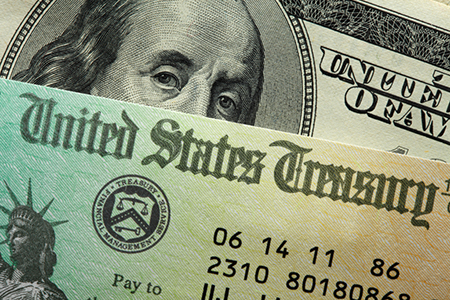 (TNS)—Though tax season may be daunting, there’s at least one thing about it you can look forward to: the arrival of your tax refund.
(TNS)—Though tax season may be daunting, there’s at least one thing about it you can look forward to: the arrival of your tax refund.
During last year’s filing season, the average tax refund was $2,797. That’s enough money to buy five Apple Watches, treat yourself to a Caribbean cruise or snag a couple of VIP tickets to the Coachella music festival.
The urge to splurge your tax refund on something “fun,” like tickets to a music festival, will probably be strong once you receive your check. However, it’s important that you take a good look at your finances before your blow your tax refund on something nonessential. Otherwise, you might regret not using your refund for more important goals, such as building up your savings or getting out of debt.
How to Spend Your Tax Refund: Prioritize
First and foremost, set a goal and an action plan for your tax refund. If you let it absorb into your checking account, you’ll end up spending it on a number of minor expenses — from shopping to coffee — that don’t really matter. Pretty soon, you’ll have no proof that you ever received a check for several hundred or thousand dollars from the government:
Instead, you can use your tax refund to address problem areas or opportunities in your financial life. Here, in order of most to least important, is where you should put your money.
Pay Down Debts
Even the smallest tax refund can help pay a portion of outstanding debt, like a mortgage, car payment, credit card balance or student loan, giving your principal power over high interest. If debt is your biggest financial worry, you should consider devoting your entire refund toward paying it off, since a four-digit refund can help make a lot of progress in several of the above examples.
Pad Your Emergency Fund
Experts say that everyone should have three to six months’ worth of money saved up to cover emergency expenses—but that’s not the case for most Americans. In fact, GOBankingRates recently found that 62 percent of Americans have under $1,000 in savings.
Without an emergency fund, you’re vulnerable to all sorts of unexpected occurrences — unemployment, a medical emergency, a hefty car expense, just to name a few. Build up a $1,000 cushion by depositing your entire tax refund into a savings or sub-savings account for emergencies.
Make Tax-Free Contributions
If you’ve decided to save your tax refund, do it tax-free. Go beyond the rainy day fund, and look into investing the money in a tax-deferred individual retirement account like a 401(k).
Many tax refund recipients mistake their new gains as “free money” and forget that it’s money they’ve already earned. Putting it toward your retirement means you will be spending it on yourself—eventually.
Start Investing
Your tax refund can also act as a foundation for other investments, even if your check is less than $500. There are plenty of small investment options out there—including individual stocks, mutual funds and dividend reinvestment plans—that you can try with your tax refund.
And don’t forget that a three- to four-figure tax refund is more than enough to satisfy the minimum opening deposit requirements for many certificate of deposit, money market and high-yield savings accounts.
Tackle Some Self-Improvement
One way to spend your tax refund selfishly without wasting the money is to invest it in yourself. This could mean anything from taking a class at your local community college to getting certified for a skill to put on your resume. The payoff is that you’ll get to experience something that enriches your life and advance your career down the line.
Paul Sisolak writes for GOBankingRates.com.
© 2016 GOBankingRates.com, a ConsumerTrack web property.
Distributed by Tribune Content Agency, LLC.



